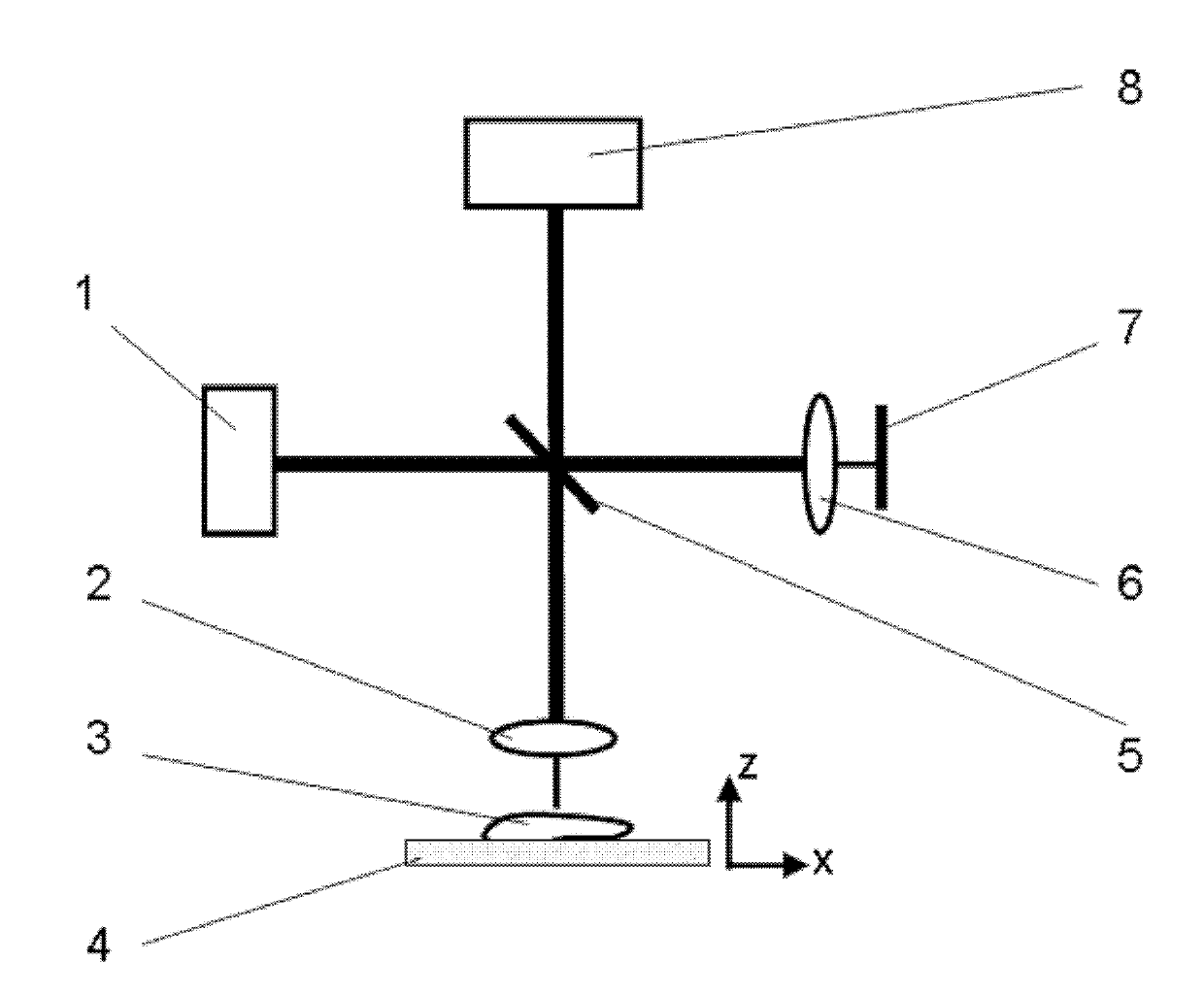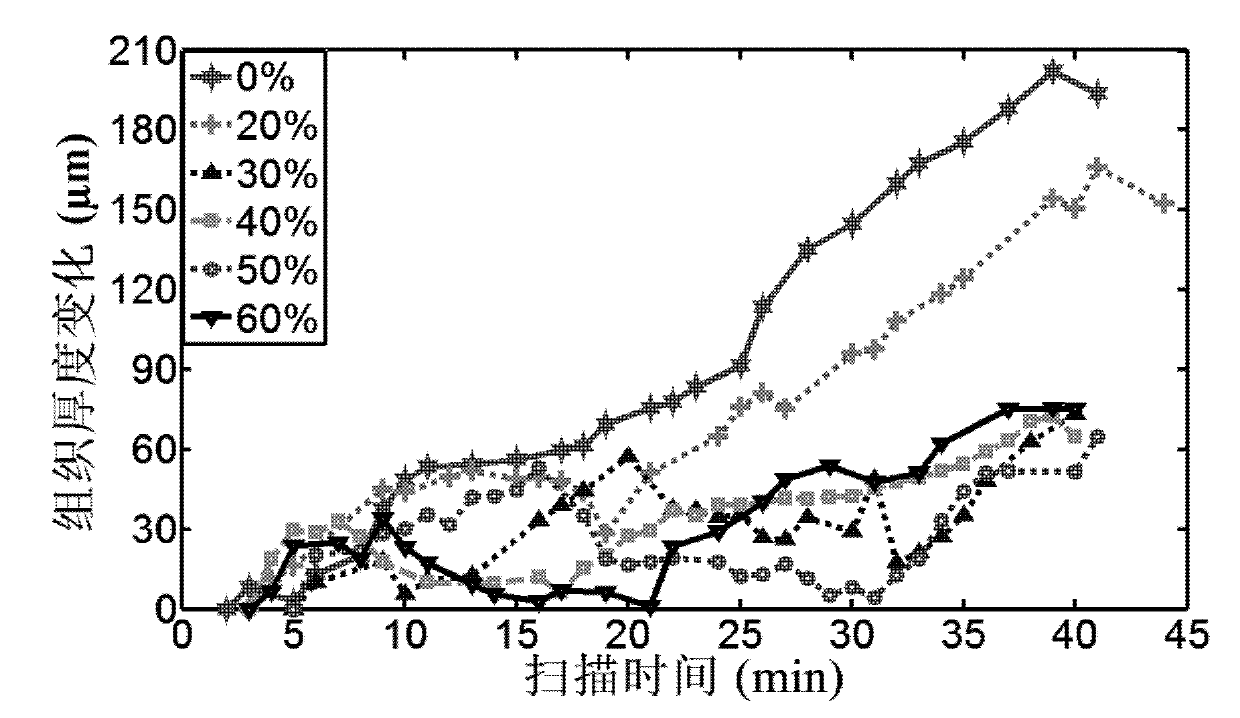Application of whiteruss as optical transparency reinforcing agent
A technology of liquid paraffin and light-transparency agent, which is applied in the field of light-transparency. It can solve problems such as difficult to penetrate the surface of biological tissue, tissue dehydration, and change of biological tissue structure, so as to improve penetration ability, reduce tissue deformation, and increase penetration speed. Effect
- Summary
- Abstract
- Description
- Claims
- Application Information
AI Technical Summary
Problems solved by technology
Method used
Image
Examples
Embodiment 1
[0036] The purpose of the experiment: To compare the light-transparency effect of the mixed solution of liquid paraffin and water-soluble light-clearing agent mixed in different proportions with the pure water-soluble light-clearing agent.
[0037] Experimental materials: In this embodiment, a mixed solution of liquid paraffin and glycerin is taken as an example for illustration. Prepare glycerol solutions with volume concentrations of 10%, 20%, 30%, 40%, 50%, 60% and 70% of liquid paraffin in the mixed solution respectively, and their corresponding volume ratios of liquid paraffin and glycerol are 1:9 , 2:8, 3:7, 4:6, 5:5, 6:4, and 7:3. Mix well. In order to obtain accurate light transparency test results over time, isolated rat skin was used as the test sample. Rats are adult rats with a body weight of about 500 grams.
[0038] Experimental method: Each concentration of liquid paraffin glycerol solution (hereinafter referred to as the mixed solution) was tested for 5 samp...
Embodiment 2
[0041] The purpose of the experiment: to test the change of the thickness of the sample over time after the mixed solutions of different concentrations are applied to the sample, reflecting the dehydration and deformation of the biological tissue.
[0042] Experimental materials: prepare the same mixed solution as in Example 1. The test sample is isolated rat skin. Rats are adult rats with a body weight of about 500 grams.
[0043] Experimental method: In order to simulate the in vivo environment of biological organisms, the sample is soaked in physiological saline, which can effectively prevent water loss caused by air, so that the thickness change is mainly caused by the reagent itself. After the reagent is coated, the distance between the focusing lens 2 and the translation stage 4 of the optical coherence tomography testing system is kept constant. The experimental test method is the same as that in Example 1. A set of optical coherence tomography images over time are ob...
Embodiment 3
[0046] Purpose of the experiment: In order to visually show the light-transparency effect after applying the mixed solution, this example gives the optical coherence tomography image of the sample coated with 40% liquid paraffin glycerol solution over time and the optical coherence of the sample without the reagent. Tomographic image.
[0047] Experimental material: 40% liquid paraffin in glycerol solution. The test sample is still isolated rat skin. Rats are adult rats with a body weight of about 500 grams.
[0048] Experimental method: with embodiment 1.
[0049] Experimental results and conclusions: The experimental results are attached Figure 4 . in, Figure 4 (a) is an optical coherence tomography image of a sample not coated with reagents, Figure 4 (b)-4(e) are optical coherence tomography images of samples collected 10 min, 20 min, 30 min, and 40 min after coating the 40% mixed solution, respectively. It can be seen from these images that, compared with Figure ...
PUM
 Login to View More
Login to View More Abstract
Description
Claims
Application Information
 Login to View More
Login to View More - R&D
- Intellectual Property
- Life Sciences
- Materials
- Tech Scout
- Unparalleled Data Quality
- Higher Quality Content
- 60% Fewer Hallucinations
Browse by: Latest US Patents, China's latest patents, Technical Efficacy Thesaurus, Application Domain, Technology Topic, Popular Technical Reports.
© 2025 PatSnap. All rights reserved.Legal|Privacy policy|Modern Slavery Act Transparency Statement|Sitemap|About US| Contact US: help@patsnap.com



